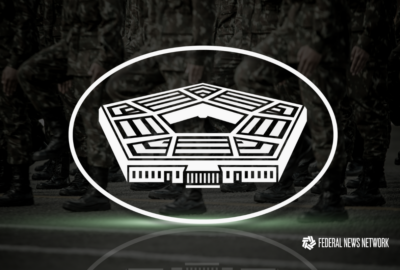Insight by Future Tech Enterprise
Quick: What’s the most critical technology asset in your organization?
PCs are the most important IT assets, says Future Tech CEO Bob Venero. He explains how to derive maximum cost avoidance by amping up end user productivity.
This is the fifth article in our IT lifecycle management series, Delivering the tech that delivers for government.
The headline on this article, asking about the most important technology in you organization, is not meant as clickbait. It’s a question that Future Tech Enterprise President and CEO Bob Venero likes to ask current and would-be customers.
As IT assets go, Venero ranks the PC at No. 1. But that’s not what people typically tell him. They might say their enterprise resource planning systems, or their capture systems or a host of other tools and capabilities. But rarely do they mention their end user devices, Venero said during an interview for Federal News Network’s series, Delivering the tech that delivers for government.
“I might say, ‘OK, now how do you access all of that information,’ and they access that information through a PC, and every one of their employees has a PC,” he said. “So when we look at the importance of what that PC does, and making sure that you are having the proper lifecycle components tied to that PC, it is one of the most important tools that they have in their organizations.”
Squeezing value out of end user devices and improving lifecycle management is a passion for Venero. He has built his business at Future Tech helping organizations — particularly federal systems integrators — get the most from their IT assets.
“We really started working with federal systems integrators on day one, when we started the company in the basement of my house in 1996,” he recalled. “We were really focused on, ‘How do we help those federal systems integrators accomplish their mission?’ — whether that was supporting the warfighter, whether that was putting satellites into space, whether that was keeping our borders safe, whatever their mission was.”
More than a quarter-century later, Venero shared critical factors that continue to affect lifecycle management and how Future Tech helps FSIs and other organizations address them.
Make productivity a priority to derive savings through cost avoidance
Without doubt, organizations sleep on the cost avoidance savings potential of good PC lifecycle management, Venero said.
In part that’s because PCs often are the first technology that organizations look to when budgets are tight or drop, he said. “Everybody jumps to the PC to reduce cost, whether they make it last another two years beyond its lifecycle than they should, or whether they’re going to not refresh or whether they’re going to reduce the specs.”
But it’s possible to radically avoid costs through the productivity advantages that come from maintaining PCs across the enterprise, Venero said. He recounted one example where a Future Tech team did a productivity assessment at one company of all the machines in use for four or more years.
“They were losing about $300 million a year in lost productivity by having 26,000 devices that were over four years old,” he said. “If a machine is running slow or has problems, you’re impacting that cost. This customer did not have a budget for it, but after we did the productivity analysis, they refreshed those 26,000 devices in one year.”
Centralize configuration management to keep current, tighten up security
The move to hybrid environments in a post-COVID world changed device management with the need to ensure most employees can work effectively when remote. It also made consistent security-minded configuration important, Venero said.
“There are security constraints and concerns, things that you have to look at differently, in order to support the mass of folks that are now working remote,” he said.
Future Tech helps organizations by managing configuration services so that their applications are already implemented and installed on every device at its factory. It ensures that employees, no matter their location, “can be up and running day one, making sure that they’re being productive for their environment, making sure that the right security attributes are tied into that system — and they are being monitored and managed,” Venero said.
This enterprise approach to configuration also has set the stage for being able to deliver consistent customer and employee experiences for end users and to take advantage of automation and artificial intelligence capabilities at scale, he said. But it’s important for FSIs to be able adhere to government’s CX directives and agencies’ AI guardrails, Venero added.
To that end, Future Tech brought together a team of technologists, who came from the FSI space and understand large language models and AI, to develop an AI readiness assessment.
The idea is to help FSI’s by addressing a couple of questions: “Where are you on your journey, and what are the things that we can do to help you go down that path? We’re talking about future investment protection,” he said. “AI-enabled PCs are definitely one of those investments where you want to buy into it early. Because when you need it and you’ve created the proper guardrails around it, you want to be able to activate it and let it go.”
Future Tech partners with Dell Technologies to bring AI journey decision-making to customers, Venero said. “No matter where organizations are on their AI journey, or even if they’re unsure where to start, we are ready to help them stay ahead and act quickly to ensure their technology remains competitive. Delaying decisions on AI investments is not an option.”
Lean into OpEx models with PC as service, Day 1 readiness
Increasingly, Future Tech also has been moving capital expenditures for PCs to operational expenditures.
By providing an OpEx capability for PCs, Future Tech can offer organizations a complete solution — PC as a service at a monthly fee — that supports remote workers while reducing failures, Venero said. It means an organization can pay “a one-time charge on a new asset that will last the life of that asset in support through our organization.”
Likewise the company has tried to ease startup on new projects and help FSIs with capture activities by creating a new Day 1 Readiness program that’s based on common needs across capture activities.
Looking at its own data from working with integrators, Future Tech found that capture activities directly depended on 80% of the same infrastructure components, Venero said.
Future Tech Day 1 Readiness “allows a company to be able to have their architects and their engineers go into our portal, and based on a use case, see the exact bill of materials that they need, be able to look at the budget associated with it, look at the architecture design and then take it right out of that portal and go to management for approval,” he said.
What’s next? A company can then buy those components on an as-needed basis from Future Tech, which stocks what Venero calls the “80 percenters” in its warehouses and has configuration centers ready to make necessary customizations.
“We’ve taken the time to implement down from months to weeks. We’ve taken the time to quote down from weeks to hours. That helps FSIs win more programs and more deals and stand up quicker. Speed of delivery, speed of quote, speed of support today is extremely important.”
Discover more stories about how federal systems integrators and government contractors manage their enterprise infrastructure environments in our series Delivering the tech that delivers for government, sponsored by Future Tech Enterprise.
To listen to the full discussion with Future Tech’s Bob Venero, click the podcast play button below:
Check out all podcast episodes of the Delivering the tech that delivers for government series.
Copyright © 2025 Federal News Network. All rights reserved. This website is not intended for users located within the European Economic Area.
Vanessa Roberts crafts content for custom programs at Federal News Network and WTOP. She’s been finding and telling B2B, government and technology stories in the nation’s capital since the era of the “sneakernet.” Vanessa has a master’s from the Columbia Graduate School of Journalism.






